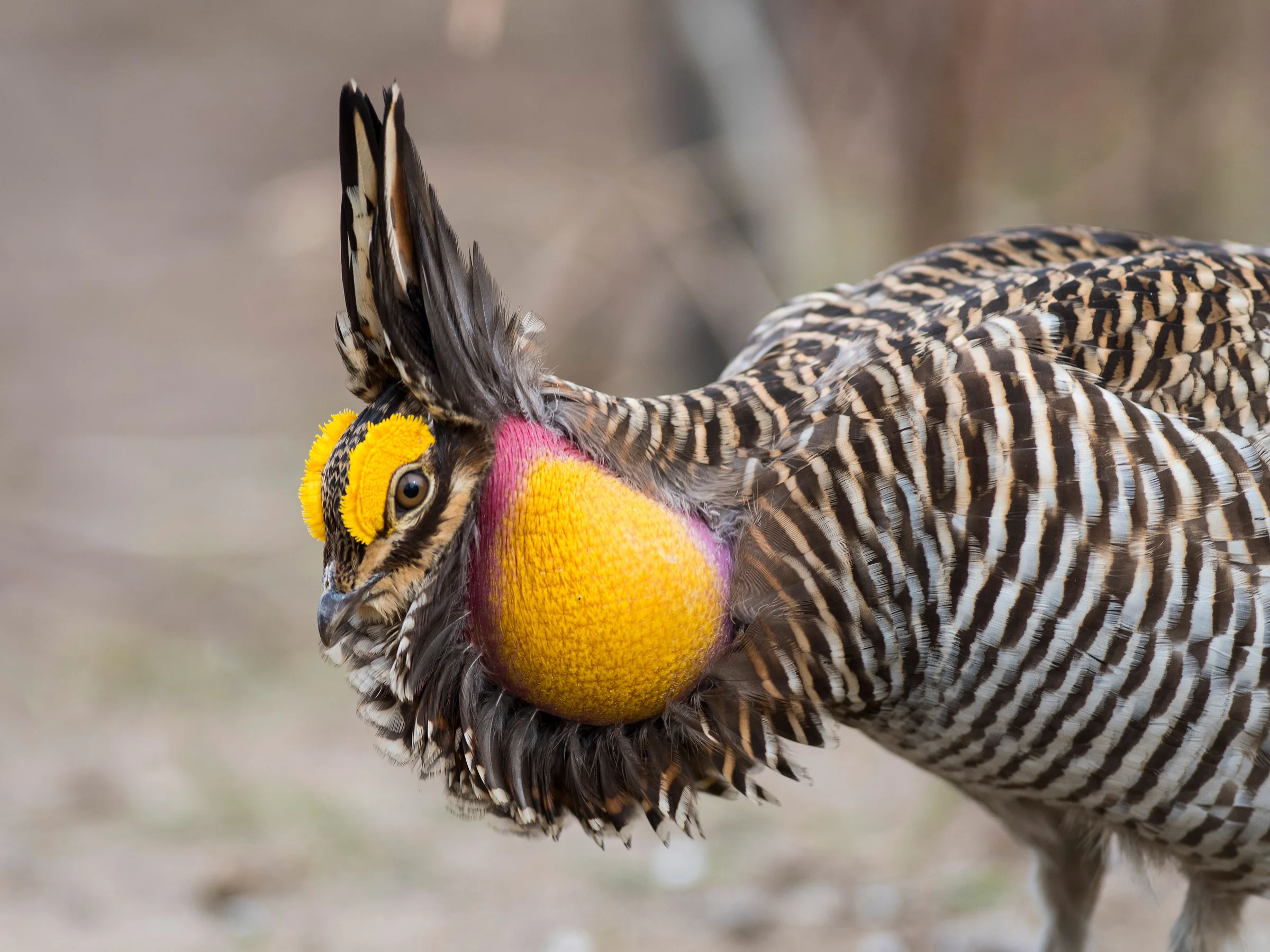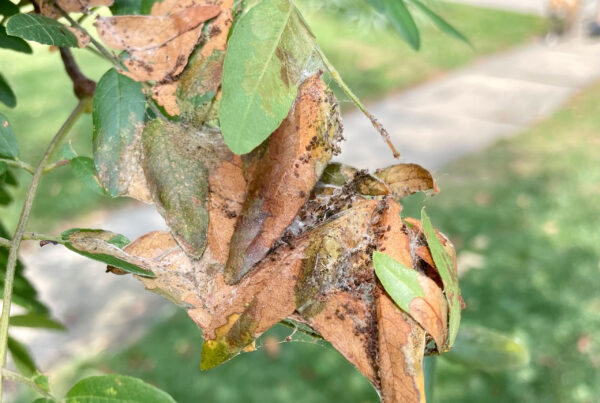Endangered Species Day is observed annually across the planet on the third Friday in May. The day serves to recognize the Endangered Species Act, one of the most far-reaching conservation laws in the United States and beyond, and all the organisms that it supports. The Endangered Species Act, a federal law enacted in 1973, establishes protections and ecological guidelines for species of conservation concern that need it most. In our ever-urbanizing world, habitat loss, invasive species, and pollution are significant threats that decrease the health and wellbeing of countless plants, animals, and fungi.
Under the Endangered Species Act, a species may be classified as endangered or threatened. An endangered species is one that is in danger of extinction throughout all or a significant part of its range. A threatened species is one that is likely to become endangered in the near future in all or a significant part of its range (USFWS). Federal classifications like these are the most well-known, but each state has its own method of classifying species of conservation concern. Missouri uses the following scale:

By Hunter Moore. Hunter is the Kansas City WildLands Program Manager.
- S1: Critically Imperiled: Critically imperiled in the state because of extreme rarity or because of some factor(s) such as very steep declines making it especially vulnerable to extirpation from the state.
- S2: Imperiled: Imperiled in the state because of rarity due to very restricted range, very few populations or occurrences, steep declines, or other factors making it very vulnerable to extirpation from the state.
- S3: Vulnerable: Vulnerable in the state due to a restricted range, relatively few populations or occurrences, recent and widespread declines, or other factors making it vulnerable to extirpation.
- S4: Apparently Secure: Uncommon but not rare; some cause for long-term concern due to declines or other factors.
The Kansas City region is home to several species of conservation concern on both the federal and state levels that need more support now than ever before. Read about a few of them below:
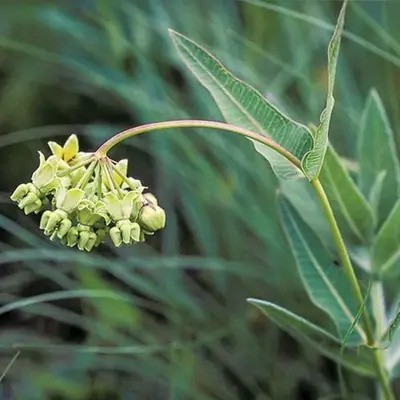
Mead’s Milkweed
(Ascelepias meadii)
State Rank: S2 | Federal Status: Endangered
This milkweed, like other milkweeds, provides critical resources to pollinators like monarch butterflies. Conservation efforts focus on periodic burning of prairies where the flower typically grows, delayed haying, and rotational grazing. In the past, Mead’s milkweed was found throughout much of Missouri and Kansas, but is now only found sparsely in the Osage Plains and St. Francois mountains in the Ozarks.

Goldie’s Fern
(Dryopteris goldiana)
State Rank: S2
This fern prefers rich woods and can be found growing along ravines, wetlands, and deep valleys. Goldie’s fern fronds can grow up to 4 feet in length – it is the largest North American Dryopteris species. Conservation efforts focus on removal of invasive species. Goldie’s fern was common throughout the region, but has decreased in numbers due to unsuitable habitat.

Northern metalmark
(Calephus borealis)
State Rank: S1
This species may seem like a moth due to its coloration, but it is a true butterfly. Half-grown caterpillars hibernate in leaf litter over the winter and emerge the next season to finish growing. The host plant of this species is in the genus Packera, the ragwort/groundsel family. Conservation efforts focus on increasing beneficial native plants, leaving the leaves, and removing invasive species.
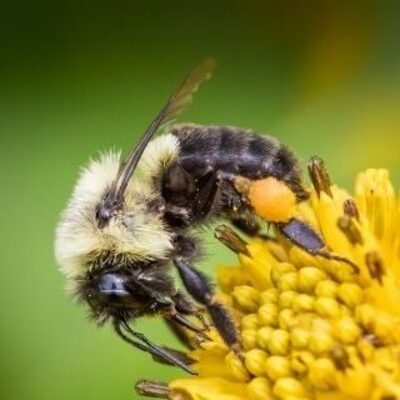
American bumblebee
(Bombus pensylvanicus)
State Rank: S3 | Federal Status: Under Review
This bumblebee used to be the most prevalent bumble across the southern United States, but populations have decreased exponentially in recent years. It functions as a pollinator for several species of sunflowers and clovers. Conservation efforts focus on increasing native plants, scientifically-sound prairie management, and removal of invasive species.

Greater prairie chicken
(Tympanuchus cupido)
State Rank: S1 | Federal Status: Near Threatened
This brightly-colored bird was once widespread across the Great Plains region that the KC metro straddles, but has since become a rare sight. The greater prairie chicken is famous for lekking, a mating behavior where the birds inflate neck sacs to create booming noises that echo throughout the prairie. Conservation efforts focus on increasing habitat connectivity, removing invasive species, and conserving rapidly disappearing grasslands.

Mississippi kite
(Ictinea mississippiensis)
State Rank: S3
This bird is a summer resident in our area and can be seen soaring near the forests and grasslands of the Missouri River Valley. Mississippi kites are small birds of prey, with an average wingspan of around 36 inches. After August/September, the birds migrate south to winter in Paraguay, Argentina, Brazil, and Bolivia. Conservation efforts focus on improving bottomland forests and grasslands that the birds prefer through invasive species removal and increasing habitat connectivity.
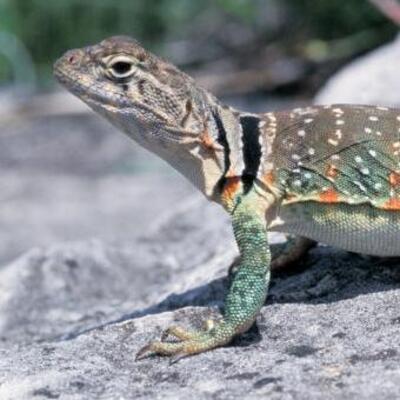
Eastern collared lizard
(Crotaphytus collaris)
State Rank: S4
This brightly-colored lizard once had larger, more connected populations throughout our region. Eastern collared lizards require dry, rocky glade habitat to support their populations. This lizard can run up to 16mph, faster than many other local reptiles. Conservation efforts focus on prescribed fire, removal of invasive species, and increasing habitat connectivity.
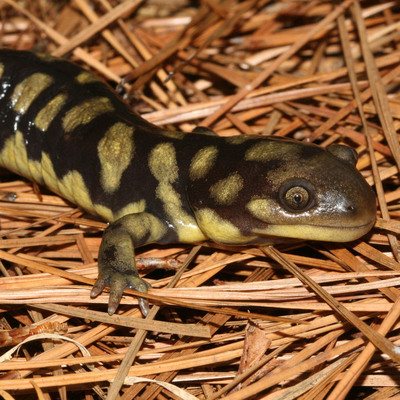
Eastern tiger salamander
(Ambystoma tigrinum)
State Rank: S3
This salamander is mostly active at night and spends its days staying moist under logs or in burrows. Easter tiger salamanders can live in a wide variety of habitats and are found all around Kansas and Missouri, including in woodlands, swamps, prairies, and are sometimes even found in people’s basements. These salamanders rely on fishless water holes (ephemeral pools) to reproduce, and conservation efforts are focused on increasing these habitats.

Pallid sturgeon
(Scaphirynchus albus)
State Rank: S1 | Federal Status: Endangered
These fish are often referred to as the ‘dinosaur of the Missouri’ due to their ancient evolutionary lineage. This sturgeon’s defining feature is a long and pointed snout and plate scales across its back. It requires sand bars and areas of strong current and is only found in the Missouri and Mississippi Rivers. Conservation efforts focus on increasing habitat connectivity, increasing suitable habitat, and decreasing bycatch.

Tri-colored bat
(Perimyotis subflavus)
State Rank: S2 | Federal Status: Proposed Endangered
This bat, formerly known as eastern pipistrelle, are small with reddish- to yellow-brown fur coloration. Historically present throughout much of the region, tri-colored bats hibernate alone in many caves throughout the winter and emerge to roost in trees and crannies in the summer. Bats are important for insect control, and this species prefers to forage over water near the edge of woodlands and forests. Conservation efforts focus on environmental education to correct misinformation, increasing suitable habitat, and preserving the caves where they overwinter.
Removing invasive species, promoting and implementing healthy, native habitat refuges, and limiting environmental impacts related to unsustainable development and urbanization are key in supporting the species of conservation concern right here at home.

